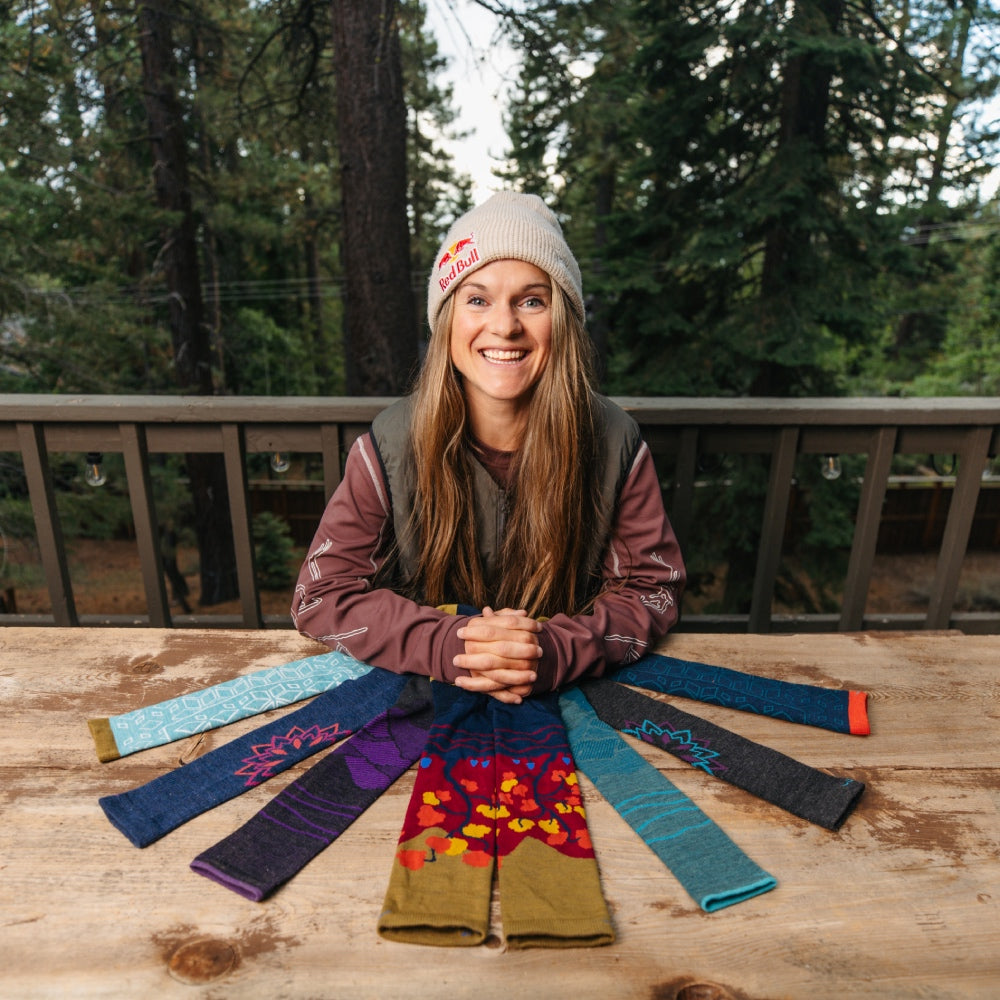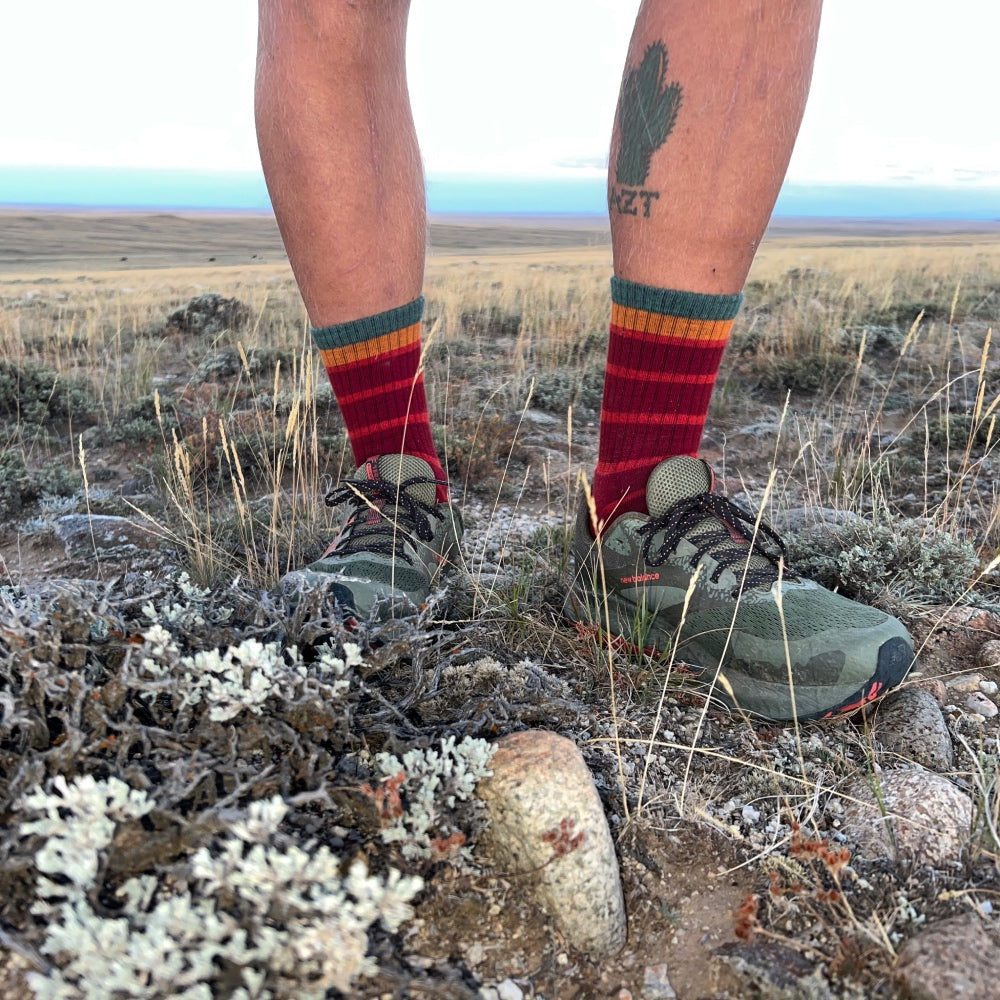The Best Socks for Sweaty Feet

I am a big guy. I have entered running races in the Clydesdale category (and placed in the top 3), and no matter what the temperature is, if I’m outside, there is a good chance I am sweating.
At first it was a little embarrassing; I would think that I wasn’t in good enough shape and that was why I was sweating. Now — thirty something years into it — I just accept that it comes with the territory.
While most people don’t really want to talk about their sweat, or hear about other people’s sweat, there is a lot of value in speaking from experience and learning lessons from others. Coming from a team sports background and learning about endurance sports and outdoor recreation by doing gave me a few lessons that I hope might shed some helpful light and prevent others from learning the hard way.
With a little planning and the right equipment, sweating — and specifically sweaty feet — doesn't have to stop you in your tracks.
Cotton Socks Can Ruin Your Day

My first attempt at ski touring was in Hyalite Canyon. I had a new touring setup and a determination to go ski Mount Blackmore. Not knowing any better, I wore cotton over-the-calf socks and worked hard trying to make forward progress with a pair of borrowed skins.
I did not make it to the summit that day, and my feet got wrecked. A combo of poor technique, skins that were too skinny for my skis, and cotton socks left me about 800ft short of the summit, sitting on my skis with my boots off, as the rest of my friends pushed on to the top.
After forcing my mangled feet back into my boots, making it back to the car, and gingerly removing feet from said boots, my friends were amazed that I didn’t know about Merino Wool socks.
Turns out, cotton socks hang onto the moisture from your sweat, keeping your feet moist and prone to blisters and cold. Meanwhile, Merino Wool wicks moisture to keep things dry and warm. That night I ordered a couple pairs of wool ski socks and never went back.
No Socks = More Stink

When I was learning to fly fish, I got a cheap pair of waders and naively thought that it was better to go sockless than deal with the extra volume of a sock inside the waders. The unfortunate thing is, neoprene does not breath and is quite warm when you are walking to different spots along a river.
After about 2 months of fishing, I started to notice that my waders had a terrible smell. Sweat and moisture had left an irreversible foot odor in the neoprene that no amount of washing was able to remove.
Socks offer an absorbent additional layer that helps draw moisture out and keeps bacteria from taking over – plus, it’s way easier to wash socks.

While I have upgraded to a nicer pair of waders, I still wash them at least once a season and have a lot less issues by wearing Merino Wool socks underneath the waders. For anyone in the market for waders, size up your wading boots and wear socks with your neoprene.
Sock Height Does Matter
While Merino Wool insulates when wet and has natural bacteria resistance to reduce foot stank, a less talked about element you should factor in if you have sweaty feet is sock height.

By having a sock that is higher than your footwear, you will see more efficient movement of moisture from your feet out into the air. While it won’t stop foot sweat, it will help keep your feet drier longer. And in a case where you step in a mud puddle that is a little deeper than you expect, it will help you get drier quicker.
I like the Micro Crew height for trail runners and hiking shoes (depending on the season), Boot height for most types of boots, and Over-the-Calf socks for ski boots.
Effort and Output
While I can’t stop myself from sweating completely, I do consider dropping the level of effort depending on the activity to limit sweating out my layers. Specifically with ice climbing and mountaineering, I have a lot of stops/starts.
Learning to slow down and keep a more controlled pace is a good practice for more than just preventing sweat. In many of these activities, it's a case of slow is safe, safe is fast.
Extra Layers

Especially with cold weather sports, it is always worth bringing some extra layers. An extra base layer, a puffy in your backpack, and a spare pair of socks are a minimum cost of admission for cold weather activities.
I definitely recommend a spare base layer shirt to switch into when you make transitions, like from the approach to pitched out climbing. Belays can be brutally cold, and starting things out with a fresh layer and less sweat from the approach can make a huge difference.
If your activity starts hot like a ski tour heading up hill, consider “starting cold” and having your layers in your backpack.
Once you get moving, you’ll heat up quickly. Even in warm weather, those extra layers make a difference, like after an unexpected slip in a creek or getting “nighted” on a hike that took longer than expected.
TL;DR

To wrap things up, Merino Wool socks are the best type of socks for sweaty feet. When you’re engaged in performance activities like hiking and running, you should expect to have some foot sweat. A pair of Merino Wool socks will keep your feet comfortable and dry, help fight blisters, keep your feet from smelling as badly, and ultimately allow you to spend more time outdoors!
Here are my top socks for sweaty feet:
- Fastpack Micro Crew: a lightweight Micro Crew with cushion gives you a great option without being too warm. I wear it for faster activities like Nordic skating, shoulder season running, and hiking/backpacking.
- VanGrizzle Boot: my favorite for winter boots and ice climbing. The midweight with cushion wicks sweat while keeping my feet the right temperature.
- Hiker Quarter: This sock is great for summer hiking and trail running in warmer seasons.
- Backwoods Over-the-Calf: My go-to backcountry ski sock. The Backwoods has just enough cushion underfoot and is lightweight to balance the warmth to weight ratio.
About the Author
Kevin is a climbing enthusiast and Darn Tough employee that can often be found roaming around Smugglers Notch between December and March. His favorite ice climbing areas are the South Fork (Cody, WY) and Hyalite Canyon (Bozeman, MT).







